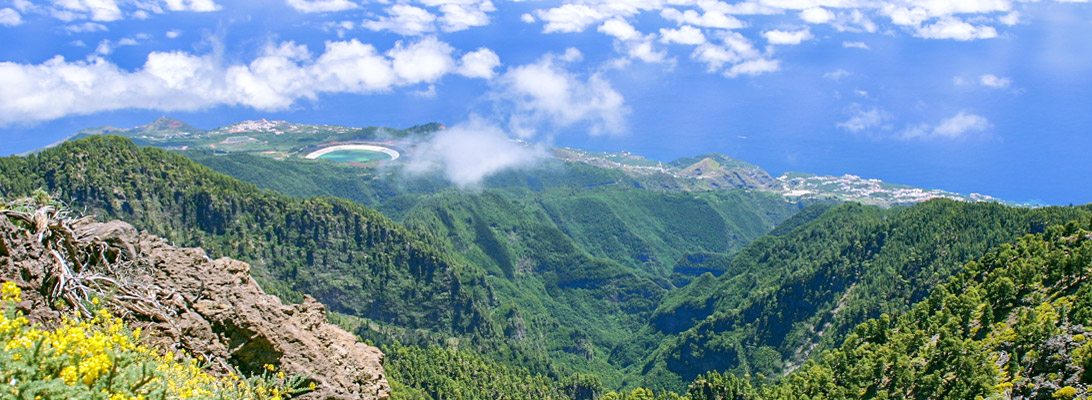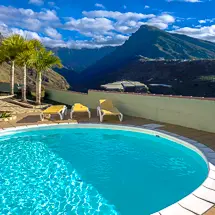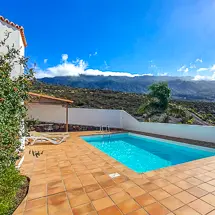Nowhere on La Palma does more rainfall than in the municipality of Barlovento on a plateau above the northeast tip of the island, which does not carry the wind in its name by chance. The municipality of Barlovento, independent from the neighboring municipality of San Andrés y Sauces since 1678, stretches from the sea up to the heights between the two Barrancos "La Herradura" (in the south) and that of Franceses (in the north). The indigenous people called the area "Tagaragre" and mainly raised livestock. They are said to have separated the young of their herds from their dams on high plateaus and gathered them together for days without food in order to soften the hearts of the rain gods with their wailing.
Dragon trees, fruit, and crafts
Later, sugar, wine cereals were grown in the municipality, today it is mainly bananas, fruits, potatoes, avocados, and citrus fruits. Great efforts were necessary to make the steep terrain suitable for agriculture and to drive galleries into the rock to extract water. More recently, two kilometers above Barlovento, the island's largest water reservoir ("Laguna") with a capacity of 5 million cubic meters (5 billion liters) was built in an old volcanic crater.
The crafts of basket weaving have its center in the district of "Las Mimbreras". In the past, coal was burned from the wood of the surrounding wet forests. In Gallegos, you can still see old tar kilns in which pine resin was heated in order to use it for the calving of ships. Also in Gallegos, there is a 100-year-old pine tree and in the district "La Tosca" about 30 dragon trees are growing, the largest collection on La Palma. From the lookout point of "La Tosca", a path leads six kilometers through the dragon tree grove to the district of Gallegos. The nature around Barlovento is characterized by pines- and laurel forests as well as Fayal Prezal vegetation.
The municipality of Barlovento was severely affected by emigration, as water shortages and economic crises repeatedly meant that it was no longer able to feed its inhabitants.














